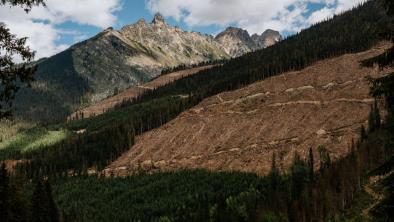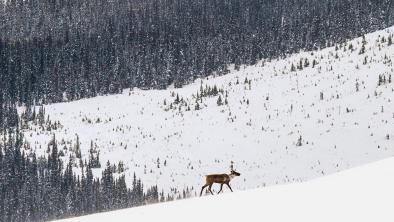Balancing act a thing of beauty
Globe & Mail

Photo: Taku River
If you take Google Earth to visit the home of the Taku Tlingit, you will find they live in a land of glaciers, rugged mountains, thundering rivers and vast forests.
It's better to drive there and see it first-hand. But the Taku Tlingit territory is a long way out there.
The community base is the small town of Atlin Lake, south of the Yukon, east of Alaska.
Atlin is north of Juneau, adrift in a landscape of such beauty that it is not uncommon to see visitors get out of their cars in the village and just stare, dumbstruck, at the view.
The people know what they've got and that's why they are fighting so hard to hang on to it.
For the past two years, the Taku River Tlingit First Nation has been meeting with the government of British Columbia in an attempt to negotiate a land management plan for the province's northwest corner. The Atlin-Taku planning area is a piece of geography that covers 30,000 square kilometres – and if the deal goes through it will be the first major settlement under the British Columbia government's so-called “New Relationship” initiative.
John Ward, spokesman for the Taku River Tlingit, says they are making progress and if things continue to go well, a groundbreaking settlement could be worked out next year.
What's interesting about the Tlingit proposal is that at its heart is a new land designation the band calls Tlatsini (pronounced Klat-sini), which is something like a park, but without the borders and the inflexible park regulations.
Tlatsini translates roughly to mean “places that make us strong.”
Under the band proposal, slightly more than half (52 per cent) of the unprotected wilderness in the northwest corner of B.C. would be designated Tlatsini lands.
Neither mineral exploration nor mining development would be allowed in those areas, although other regions would be set aside for resource activities, including some important traditional lands that are known to have rich mineral deposits.
Hunting and trapping would continue in the protected areas, which would be managed jointly by the band and the government. But there wouldn't be any logging or road building.
“We're trying to achieve protection,” says Mr. Ward, as he explains what a Tlatsini is designed to do. “These lands are important to my people and always have been through generations. It's what makes us strong.”
The Tlingit culture is based on a landscape that provides them with wild fish, game, clean water and unpolluted air.
But they know they need to be more than just hunters and gatherers, and that's why there are large areas on the map, outside the Tlatsini lands, designated for resource development.
“We realize that sooner or later we've got to cough up the minerals to contribute to the whole,” Mr. Ward says.
The Tlatsini lands, however, would set aside most of the great watersheds in the area. The Taku River would be protected, as would Trapper Lake and Kowatua River, the Lower Sheslay and Dudidontu Rivers, Blue Canyon and O'Donnel River.
This is big country: The Taku Tlingit's territory covers 40,000 square kilometres. The Taku River drainage alone is 18,000 square kilometres. It is the largest pristine, unprotected watershed in Western Canada and the biggest salmon producer in southeast Alaska.
The Tlingit are not against mining – indeed, Atlin is surrounded by placer mining activity and the band is currently working with Eagle Plains Resources Ltd. and Prize Mining Corp. to bring forward the Yellowjacket Gold Mine Project. The band also supported Adanac Molybdenum Corp.'s proposed Ruby Creek open pit operation, which was delayed when the company filed for creditor protection and began to restructure this summer.
Mr. Ward says what the band is looking for is balance between development and protection.
But the band strongly believes some big, big spaces need to remain pristine if the Tlingit way of life is to continue.
Mr. Ward feels if they get it right, the band can have the best of both worlds. Enough resource activity to provide employment and build the economy – and enough wild places preserved that the Tlingit will still be strong people, living surrounded by salmon rivers and moose pastures, for generations to come.


